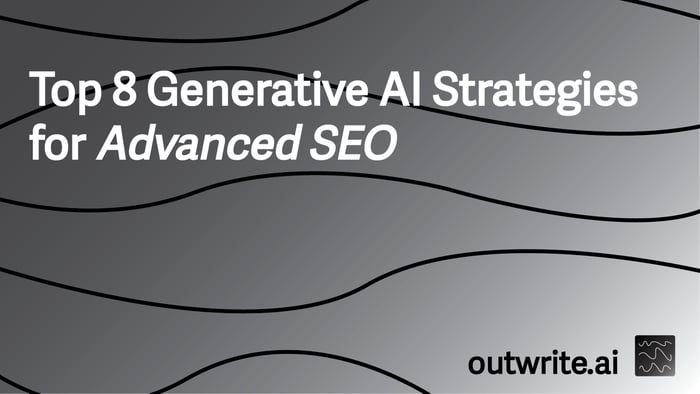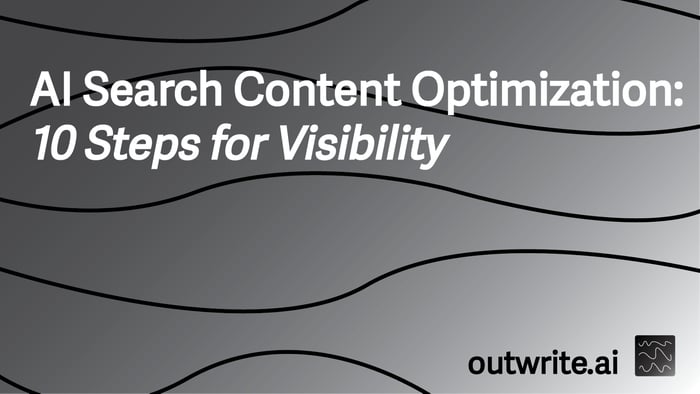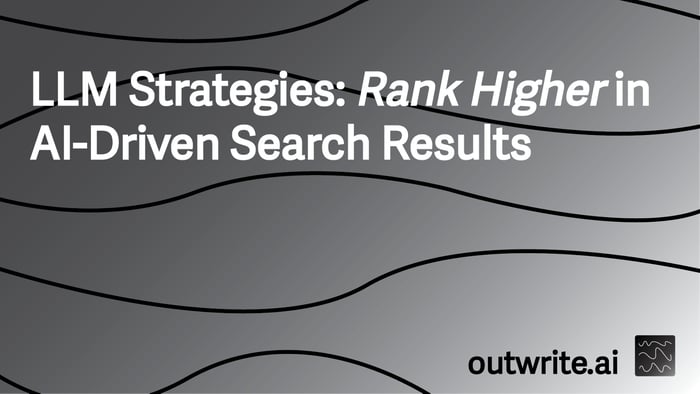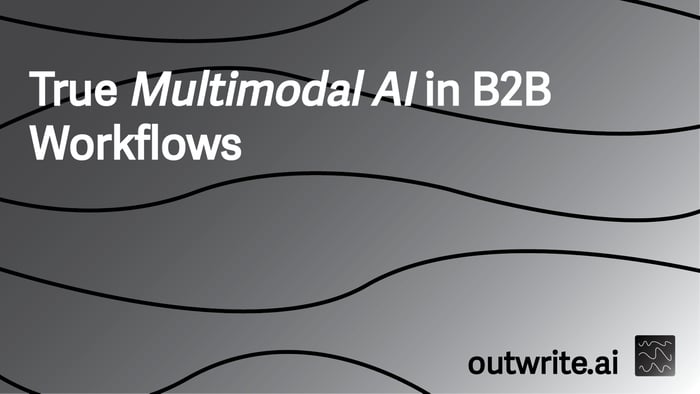Table of Contents
- The AI-Driven SEO Revolution: A Paradigm Shift
- Strategy 1: AI-Enhanced Content Creation and Semantic SEO
- Strategy 2: Programmatic SEO for Scaled Content Expansion
- Strategy 3: AI-Driven Trend Forecasting for Proactive Planning
- Strategy 4: Multilingual Content Generation for Global Reach
- Strategy 5: AI Automation for Video and Image SEO
- Strategy 6: Building Authority with Human-Centric Brand Stories
- Strategy 7: Multi-Platform Generative Engine Optimization
- Strategy 8: AI for Lead Generation and Sales Pipeline Creation
- Conclusion: Embracing the Future of AI-Powered SEO
- FAQs
The landscape of Search Engine Optimization (SEO) is undergoing a profound transformation, driven by the rapid advancements in artificial intelligence (AI) technology. Generative AI, in particular, is not merely an incremental improvement but a fundamental shift that is reshaping how content is created, optimized, and discovered. This guide delves into the top 8 generative AI strategies that are essential for advanced SEO practitioners looking to thrive in 2025 and beyond. Understanding and implementing these strategies is critical for maintaining visibility and competitive advantage in an increasingly AI-dominated search ecosystem.
As AI technology trends continue to accelerate, the importance of AI visibility cannot be overstated. By 2029, AI is expected to significantly shake up traditional SEO and Google's search algorithms, making it imperative for brands to structure their content for optimal AI consumption and recommendation. This article will explore how AI technology solutions are becoming indispensable tools for advanced SEO, offering a comprehensive guide to leveraging generative AI for superior search performance and sustained growth.
The AI-Driven SEO Revolution: A Paradigm Shift
The integration of AI technology into SEO workflows marks a pivotal moment for digital marketing. Generative AI tools are no longer niche applications but mainstream necessities, fundamentally altering how businesses approach content, keyword research, and technical optimization. This shift is evidenced by significant market trends and investment, highlighting the critical need for SEO professionals to adapt and innovate.
The market for AI-SEO software tools is experiencing explosive growth, projected to expand from $1.99 billion in 2024 to nearly $5 billion by 2033, as reported by SEO.com. This substantial growth underscores the increasing reliance on AI technology solutions to enhance efficiency and effectiveness in SEO. Furthermore, private investment in generative AI globally reached $33.9 billion in 2024, an 18.7% increase year-over-year, according to MarketingLTB and Stanford HAI, demonstrating robust confidence in the future of this technology.
Adoption rates reflect this trend, with 56% of marketers currently using generative AI in their SEO efforts, and a significant 31% using it extensively. Enterprise SEO teams exhibit even higher adoption, with 86% leveraging AI, and 82% planning further investments. This widespread integration highlights the transformative impact of AI technology on SEO strategies, making it a cornerstone for future success.
The shift towards AI-powered search is also evident in user behavior and search engine developments. By January 2025, AI-powered overviews appeared in 30% of search results and 74% of problem-solving queries, as noted by Exploding Topics. This indicates that search engines are increasingly relying on AI to deliver concise, direct answers, rather than just lists of links. For SEO professionals, this means optimizing for contextual understanding and direct answers becomes as crucial as traditional ranking factors.

Strategy 1: AI-Enhanced Content Creation and Semantic SEO
The evolution of search engines, particularly with the rise of "generative engines" like Google AI Overviews, ChatGPT Search, and Perplexity AI, necessitates a profound shift in content creation. Traditional keyword density approaches are giving way to semantic understanding and contextual relevance. Generative AI tools are at the forefront of this transformation, enabling the creation of content that resonates with both human readers and sophisticated AI algorithms.
Expert insights emphasize that AI SEO strategies must leverage natural language processing to optimize content for these new generative environments. The goal is to produce comprehensive, authoritative content that not only ranks well but also provides direct, valuable answers within AI overviews. This involves moving beyond isolated keywords to focus on broader topics and user intent, ensuring content is structured for easy consumption by AI models, as highlighted by MarketingLTB.
One compelling case study involves Unilever, which implemented a generative AI stack for content creation. By using large language model-driven keyword clustering and automated content brief creation, Unilever achieved a 30% reduction in content brief creation time and a 22% increase in organic traffic to target pages within six months. This demonstrates the significant efficiency and traffic gains possible through AI-enhanced content strategies.
To implement this AI technology strategy effectively, consider the following actionable steps:
- Develop AI-generated content briefs: Utilize tools like outwrite.ai to quickly generate detailed content outlines and briefs that incorporate semantic keywords and related topics, drastically speeding up the content creation process.
- Focus on comprehensive, authoritative topics: Instead of targeting individual keywords, create in-depth content that covers a topic thoroughly, addressing various facets and related questions. This positions your content as a valuable resource for AI overviews.
- Optimize for contextual understanding: Ensure your content uses natural language, clear headings, and logical flow. AI models prioritize content that is easy to understand and provides direct answers to complex queries.
- Integrate structured data: Enhance your content with schema markup to explicitly define entities, relationships, and key information, making it easier for AI to parse and present in search results.
Strategy 2: Programmatic SEO for Scaled Content Expansion
Programmatic SEO leverages AI technology to generate vast amounts of targeted content at scale, addressing highly specific long-tail keywords and user intents that would be impractical to target manually. This strategy is particularly effective for businesses with extensive data sets or those serving diverse, localized audiences.
The core principle of programmatic SEO is to identify patterns in user queries and then automatically generate unique, relevant pages for each variation. This can involve creating thousands of landing pages for specific product variations, service locations, or detailed FAQ combinations. The efficiency of this AI technology solution lies in its ability to automate content generation, ensuring consistency and relevance across a massive content footprint.
A prime example of successful programmatic SEO is Transit, a public transportation app. By implementing programmatic SEO, Transit expanded its website from under 300 pages to between 10,000-21,000 pages in 2023. This resulted in an astounding 1,134% year-over-year growth in organic traffic. Their strategy involved targeting specific regional commutes and optimizing for Google’s People Also Ask (PAA) boxes with AI-generated FAQs, effectively capturing diverse user intent at scale.
Implementing programmatic SEO requires a robust AI technology infrastructure and a clear understanding of your target audience's long-tail search behavior. Key steps include:
- Identify data sources: Leverage internal data, public APIs, or scraped information to identify patterns and variables that can be used to generate unique content.
- Define content templates: Create flexible content templates that can be populated with dynamic data points. AI tools can assist in generating variations of these templates.
- Automate content generation: Use generative AI platforms to automatically create page titles, meta descriptions, body content, and FAQs for each unique page variation.
- Optimize for local and niche keywords: Focus on hyper-specific keywords that cater to localized or niche user needs, ensuring each programmatic page addresses a unique search query.
- Monitor and refine: Continuously track the performance of programmatic pages, using AI-powered analytics to identify areas for improvement and further expansion.

Strategy 3: AI-Driven Trend Forecasting for Proactive Planning
In the fast-paced world of SEO, staying ahead of emerging trends is paramount. AI technology offers powerful capabilities for trend forecasting, allowing SEO professionals to predict rising search topics and user interests before they peak. This proactive approach enables content teams to create timely, relevant content that captures early rankings and establishes thought leadership.
AI-driven trend forecasting goes beyond traditional keyword research by analyzing vast datasets, including social media trends, news cycles, search query patterns, and competitor activities, to identify nascent topics. This predictive capability is a significant advantage, allowing businesses to align their content strategies with future demand rather than reacting to current trends.
A notable example of this AI technology in action is TikTok's “Insight Spotlight” tool. This tool uses AI to analyze user demographics and trending keywords, providing advertisers with crucial insights to align their content with emerging trends. By understanding what will be popular next, businesses can proactively develop content that resonates with their target audience, as highlighted by M1 Project.
Key applications of AI-driven trend forecasting in advanced SEO include:
- Predictive content planning: Use AI to identify topics that are gaining momentum, allowing you to create content before competitors and secure early search visibility.
- Niche opportunity identification: Uncover underserved content areas or emerging sub-niches that AI predicts will grow in popularity, offering opportunities for specialized content.
- Seasonal trend anticipation: Forecast seasonal shifts in search demand with greater accuracy, enabling timely content updates and promotional campaigns.
- Competitor trend analysis: Monitor competitor content and AI-predicted trends to identify gaps in their strategy and capitalize on them.
By leveraging AI for trend forecasting, SEO teams can transition from reactive to proactive content strategies, ensuring their efforts are always aligned with the evolving interests of their audience and the demands of generative search engines. This strategic use of AI technology is crucial for maintaining a competitive edge.
Strategy 4: Multilingual Content Generation for Global Reach
Expanding into international markets requires more than just translating content; it demands localized, culturally relevant messaging that resonates with diverse audiences. Generative AI is revolutionizing multilingual content creation, enabling businesses to produce high-quality, SEO-optimized content for global markets at an unprecedented scale and speed.
Traditional translation methods can be slow, expensive, and often lack the nuance required for effective SEO. Generative AI technology, however, can adapt content to specific cultural contexts, incorporate local idioms, and optimize for regional search terms, ensuring that the message is not only understood but also impactful. This capability is vital for businesses aiming to capture organic traffic from non-English speaking markets.
A remarkable success story in this domain is MedPark Hospital in Thailand. By creating multilingual content in Thai and English, the hospital significantly expanded its reach into medical tourism. This strategy led to a 523% year-over-year growth and tripled its keyword rankings locally. Furthermore, their English content achieved over 206,000 keyword rankings in the U.S., generating over 250,000 organic visits per month. This case highlights the immense potential of AI-powered multilingual SEO.
To effectively implement AI technology for multilingual content, consider these best practices:
- Implement hreflang tags: Properly configure hreflang tags to signal to search engines the language and regional targeting of your content, preventing duplicate content issues and ensuring the correct version is served to users.
- Develop localized content: Use generative AI to adapt content beyond mere translation. Focus on local search intent, cultural nuances, and regional keyword variations.
- Tailor messaging for different funnel stages: Create multilingual content that addresses users at various points in their buyer journey, from awareness to conversion, ensuring a consistent and effective message across all languages.
- Utilize AI for keyword research in multiple languages: Employ AI tools to conduct comprehensive keyword research in target languages, identifying high-volume, low-competition terms unique to each market.

Strategy 5: AI Automation for Video and Image SEO
Multimedia content, particularly video and images, plays an increasingly vital role in SEO, especially with the rise of visual search and AI-powered content analysis. Generative AI offers powerful automation capabilities for optimizing these assets, enhancing their discoverability and accessibility across various search platforms.
Optimizing multimedia manually can be time-consuming and resource-intensive. AI technology streamlines this process by automating tasks such as transcription, captioning, alt-text generation, and keyword tagging. This not only improves the SEO performance of visual content but also enhances user experience and accessibility, which are crucial ranking factors for modern search engines.
A practical example of this AI technology solution is Pictory AI, which enhances video SEO by automating transcription, captioning, summaries, and applying keyword-aligned tags and descriptions. This automation significantly boosts the discoverability and accessibility of video content in search results, as noted by M1 Project. Similarly, AI tools can analyze images to generate highly descriptive alt text, making images more understandable to search engines and visually impaired users.
Key areas where AI automation can revolutionize video and image SEO include:
- Automated alt text generation: AI can analyze image content and generate accurate, keyword-rich alt text, improving image search rankings and accessibility.
- Video transcription and captioning: Generative AI can automatically transcribe video dialogue and create captions, making video content searchable and accessible to a wider audience.
- Keyword tagging and categorization: AI can analyze video and image content to suggest relevant keywords and categories, improving their discoverability in multimedia search.
- Summarization of video content: AI can create concise summaries of long videos, providing quick insights for users and helping search engines understand the core topic.
- Metadata optimization: AI tools can assist in generating optimized titles, descriptions, and other metadata for multimedia assets, aligning them with target keywords and user intent.
Strategy 6: Building Authority with Human-Centric Brand Stories
In an increasingly AI-driven content landscape, the human element becomes even more critical for building trust, authority, and brand differentiation. While AI excels at generating factual content, it struggles to replicate genuine human experience, emotion, and unique brand narratives. Advanced SEO strategies must leverage AI to amplify human stories, not replace them.
Generative AI can assist in structuring narratives, optimizing storytelling for search, and identifying opportunities to inject human expertise and empathy. However, the core of building authority lies in showcasing authentic experiences, thought leadership, and the unique values that AI cannot mimic. This approach is essential for standing out in generative AI summaries and establishing a credible presence.
Expert advice emphasizes the importance of highlighting partnerships and teamwork elements that AI cannot replicate. Sharing human insights, detailed case studies, and compelling brand stories improves trust and engagement in AI-driven search experiences, as highlighted by MarketingLTB. This means creating content that goes beyond mere information, offering perspectives and experiences that only humans can provide.
Practical ways to integrate human-centric brand stories with AI technology for SEO:
- Showcase expert interviews: Use AI to transcribe and summarize interviews with industry leaders, then manually refine and optimize these insights for search.
- Publish detailed case studies: Develop in-depth case studies that highlight real-world challenges, solutions, and human successes, using AI to help structure and optimize the narrative.
- Share behind-the-scenes content: Offer glimpses into your company culture, team values, and product development process, emphasizing the human effort behind your brand.
- Personalize content with human anecdotes: Integrate personal stories and anecdotes into your content, making it more relatable and memorable. AI can help identify opportunities for such inclusions.
- Foster community engagement: Encourage user-generated content, testimonials, and reviews, which serve as authentic social proof and human-driven authority signals.
By strategically combining the efficiency of AI with the irreplaceable value of human authenticity, brands can build stronger authority and trust, which are increasingly important factors in how AI models evaluate and recommend content.

Strategy 7: Multi-Platform Generative Engine Optimization
The SEO landscape is no longer solely dominated by Google. The emergence of diverse AI platforms like ChatGPT, Claude, Perplexity AI, and others means that advanced SEO strategies must encompass optimization for multiple generative engines. This requires understanding the unique characteristics of each platform and adapting content accordingly while maintaining brand consistency.
Each generative AI platform may have different ways of processing information, prioritizing sources, and presenting answers. Therefore, a "one-size-fits-all" approach to content optimization is no longer sufficient. SEO professionals need to develop specialized strategies for each platform to maximize visibility and ensure their content is recommended across various AI-powered search experiences.
Market insights confirm that SEO in 2025 must optimize not only for Google but also for these emerging AI platforms, requiring specialized platform-specific strategies while maintaining consistent brand messaging, as discussed by SEOProfy. This means diversifying your optimization efforts beyond traditional search engine algorithms to include the nuances of conversational AI and generative search interfaces.
Consider the following actions for multi-platform generative engine optimization:
- Develop adaptable content: Create content that can be easily repurposed and optimized for different AI answer engines. This might involve varying content length, tone, or structure.
- Monitor platform-specific metrics: Track how your content performs on various AI platforms, including engagement rates, answer accuracy, and source attribution.
- Understand AI model biases: Research and understand the inherent biases or preferences of different AI models to tailor your content for better reception.
- Optimize for conversational queries: Given the conversational nature of many generative AI interfaces, optimize content for natural language questions and answers, using a Q&A format where appropriate.
- Ensure consistent brand messaging: While adapting content for different platforms, ensure that your core brand message, voice, and values remain consistent across all channels.
Strategy 8: AI for Lead Generation and Sales Pipeline Creation
The ultimate goal of many SEO efforts is to drive business growth, and generative AI is proving to be a powerful catalyst for lead generation and sales pipeline creation. By optimizing content for high-intent queries and leveraging AI-driven insights, businesses can convert organic visibility into tangible revenue opportunities.
AI technology enhances lead generation by enabling the creation of highly targeted content that addresses specific pain points and solutions, attracting qualified prospects. Furthermore, AI can analyze user behavior on your site, predict conversion likelihood, and even personalize calls to action, guiding users seamlessly through the sales funnel.
A compelling case study is Xponent21, which achieved a remarkable 4,162% traffic increase within a year by leveraging AI SEO visibility. This success translated directly into daily qualified sales leads (SQLs), enabling the company to build a multimillion-dollar sales pipeline from inbound leads generated through AI-optimized organic content, as detailed by Xponent21. This demonstrates how AI can drive both marketing and revenue growth, making it a critical AI technology strategy for business development.
To effectively use AI for lead generation and sales pipeline creation:
- Create high-value, expert positioning content: Develop in-depth guides, whitepapers, and case studies that establish your brand as an authority, tailored to target decision-makers.
- Optimize for conversion-focused keywords: Use AI to identify keywords that indicate high purchase intent, such as "best [product] for [industry]" or "how to solve [problem] with [solution]."
- Implement AI-powered personalization: Use AI to dynamically adjust content, offers, and CTAs based on user behavior and preferences, increasing the likelihood of conversion.
- Integrate AI with CRM systems: Connect your AI SEO tools with your Customer Relationship Management (CRM) system to track leads from organic search to sales, providing a holistic view of the customer journey.
- Track conversion metrics: Continuously monitor conversion rates from AI-driven search traffic, optimizing keywords, content topics, and landing pages to maximize lead quality and quantity.

Conclusion: Embracing the Future of AI-Powered SEO
The integration of generative AI into advanced SEO is not merely an option but a strategic imperative. The data unequivocally shows a rapidly evolving landscape where AI technology is driving efficiency, content quality, and search performance. From automating content creation and trend forecasting to scaling multilingual efforts and enhancing lead generation, the top 8 strategies outlined in this guide provide a robust framework for navigating the complexities of modern SEO.
As AI visibility becomes increasingly critical, especially with AI-powered overviews appearing in a significant portion of search results and the projected impact of AI on search by 2029, brands must proactively adapt. The future of SEO lies in leveraging AI technology solutions to not only meet current search demands but also anticipate future shifts. This involves a blend of AI-driven automation and human strategic oversight, ensuring content is both technically optimized and authentically engaging.
For organizations looking to create and publish content quickly that is structured for optimal AI visibility and gets brands recommended more often, platforms like outwrite.ai are indispensable. These tools empower SEO professionals to embrace the AI revolution, transforming challenges into opportunities for unprecedented growth and market leadership. The time to invest in AI-powered SEO is now, securing a competitive edge in the rapidly approaching AI-first search era.
By Aidan Buckley — Published October 22, 2025





